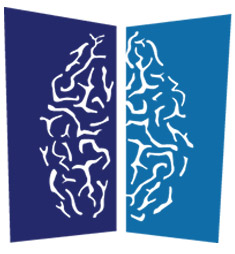Many people associate September with autumn leaves, a cool breeze, and children waiting at the bus stop anticipating their first day of school. But, September also marks Hydrocephalus Awareness Month. Hydrocephalus is a condition in which cerebrospinal fluid (CSF) abnormally accumulates in the brain. There is currently no prevention or cure, but it can be managed with surgery.
Traditionally, hydrocephalus is treated with a shunt, a device that allows excess CSF to be “shunted” (moved) to another area of the body. Shunting is achieved by placing a permanent tube into one of the brain’s four ventricles (a network of cavities that are filled with CSF) or into the space of spinal fluid. Read about the remarkable recovery of Hailie Mussinan from New Jersey after hydrocephalus surgery.
Although shunts are the most common surgical treatment for hydrocephalus and the success rate is high, there are drawbacks to this lifesaving procedure. Shunts may result in mechanical failure, deterioration, blockage or infection. If implanted in children, they need to be replaced as they are outgrown.
What’s the Alternative Treatment for Hydrocephalus?
If CSF abnormally accumulates in the brain because of a blockage, endoscopic third ventriculostomy (ETV) may be an effective course of action. An ETV is a minimally invasive surgery that normalizes brain pressure without the use of a shunt. It is intended for those with obstructive (non-communicating) hydrocephalus because it creates a bypass for the fluid that flows over the brain and gets reabsorbed into the bloodstream.
To understand what an ETV actually is, it is helpful to understand the term.
ETV: Hydrocephalus Treatment Without a Shunt
Endoscopic refers to the type of equipment used for the procedure; an endoscope is a thin, flexible tube with a camera attached.
The word ventriculostomy refers to the part of the brain in which the surgery is performed.
When CSF outflow is blocked, the blockage commonly occurs in a narrow path between the third and fourth brain ventricles. The bypass during surgery is made through the membrane in the base of the third ventricle, thus the word third in ETV.
What Is the Medical Procedure for an ETV?
During an ETV procedure, neurosurgeons create a small hole in the skull, behind the hairline. An endoscope is inserted into the area that houses cerebrospinal fluid. The surgeon creates an opening in the brain tissue, which allows drainage of the fluid to flow as it should.
The hole made in the skull is covered following the ETV procedure. In a successful ETV, no further treatment for hydrocephalus is required.
However, just like shunting, ETVs also have drawbacks, such as infection or the possibility of the closure of the hole that is made for CSF drainage.
What Is the Success Rate for ETV Surgery?
As with many such procedures, advanced technology has greatly improved the success rate of ETV neurosurgery. For example, a recent development is that endoscopes used for neurosurgery (nueroendoscopes) have better optic capabilities. This has enabled neurosurgeons to perform ETVs with even greater assurance, as well as with increased patient safety.
In studies with carefully selected patients, ETVs have had a high level of success. In multiple references of the measure of this procedure, called ETVSS (ETV Success Score), positive results have been validated in those age two and older.
Meanwhile, in a study published in January 2016, among 243 adults who underwent ETVs, the success rate was 72.8 percent. Success was measured in the following terms: no further procedure was necessary to divert cerebrospinal fluid, and there was clinical improvement.
In 2017, a study was carried out on children younger than 2 years old.
For pediatric cases under 19 years old, a 2017 study showed that patients younger than 1 year had less success with ETV surgery than shunt surgery. Another study focused on children aged less than 24 months showed less than 1 month old showed the highest ETV failure rate (80%) but after 1 month old, ETV success rates started rising from 70%.
Recovery and Complications from ETV Surgery
Recovery after ETV surgery is relatively quick due to the use of minimally invasive surgery techniques. However, patients need to be diligent in monitoring their recovery in case any complications arise.
Possible risks after ETV surgery include the hole closing, infection, bleeding, or the brain being unable to absorb the cerebrospinal fluid. In some cases, it is possible to re-do the surgery, otherwise, a shunt may be recommended.
Nerve problems may also cause side effects such as weakness down one side, double vision, or hormone issues. These usually resolve on their own but there is a small risk of permanent complications.
 ETV Success Score
ETV Success Score
The ETVSS is calculated to give an indication of the six-month success rate of pediatric ETV procedures. It is calculated based on a number of factors:
Age
- Less than 1 month old: 0 points
- 1 month–6 months: 10 points
- 6 months – 1 year: 30 points
- 1 year – 10 years: 40 points
- Older than 10 years: 50 points
Etiology
- Previous infection: 0 points
- Myelomeningocele / intraventricular hemorrhage / non-tectal brain tumor: 20 points
- Aqueductal stenosis / tecal tumor / other: 30 points
Previous shunt
- Previous shunt: 0 points
- No previous shunt: 10 points
ETV success Score
- 0–30 points: 0.0–0.25
- 40–60 points: 0.45–0.55
- 70–90 points: 0.7–0.9
Consult an ETV Neurosurgeon
All candidates for whom ETV is an option must be individually evaluated by experienced neurosurgeons in order to determine their viability for this procedure.
At Advanced Neurosurgery Associates (ANA), our neurosurgeons have been specially trained in the treatment of hydrocephalus, employing the use of all methods of surgery. In fact, ANA was one of the first neurosurgery groups in the region to utilize advancements in minimally invasive techniques that have vastly improved surgery for hydrocephalus.
For additional information or to schedule an appointment, contact us today.
For an inside look at a young ANA hydrocephalus patient living a normal life following ETV, watch the video of Giana DiLascio. This 13-year-old tells a compelling story, providing mature insights far beyond her years. Also, hear from Amanda Breem about life after hydrocephalus surgery or hear about her journey below. They are joined by a host of others on our testimonial page who have been treated for hydrocephalus.

ANA is a team of expert neurosurgeons and medical professionals, who combine their decades of knowledge to provide information, events, and articles on a range of neurological conditions.


 ETV Success Score
ETV Success Score


1 Comment
Hello I would like to speak to someone with regard to the ETV procedure for my brother. With somebody kindly quote call me or contact me through my email. Thank you very much. I appreciate your help with this matter. Have a great day.